The challenge
7Geese’s ultimate vision was to utilize our rich employee performance data (goals, reviews, feedback, and recognition) and weave it into a meaningful story over the course of not just a business year, but a person’s career journey within the company.
Delivering on this vision would help us maintain an innovative edge over a rising number of competitive startups.
Furthermore, this project was meant to address some significant challenges that 7Geese was facing at the time:
Business challenges
- 7Geese’s feature set was quickly becoming commoditized, and they risked losing their position as an innovator without a novel offering.
- The revenue team needed a premium-tier offering to increase ARR via upsell, rather than purely relying on net new sales.
Customer challenges
- HR leaders struggled to prove the ROI of Performance Management activities, which added risk to contract renewals.
- Employees perceived performance management activities as low-value. “What’s in it for me?” was fairly often cited as a detractor for user adoption.
Kicking off
Career management was a domain that was fairly new to the team, which justified a significant discovery phase.
I leaned heavily on our Customer Success team for customer and domain insight during discovery for this project. As a team of past HR leaders and org psychs, they had incredibly valuable knowledge about the space we were entering. We leveraged their networks to set up interviews with customers and HR leaders to learn as much as we could about their processes, experiences, and insights related to career development.
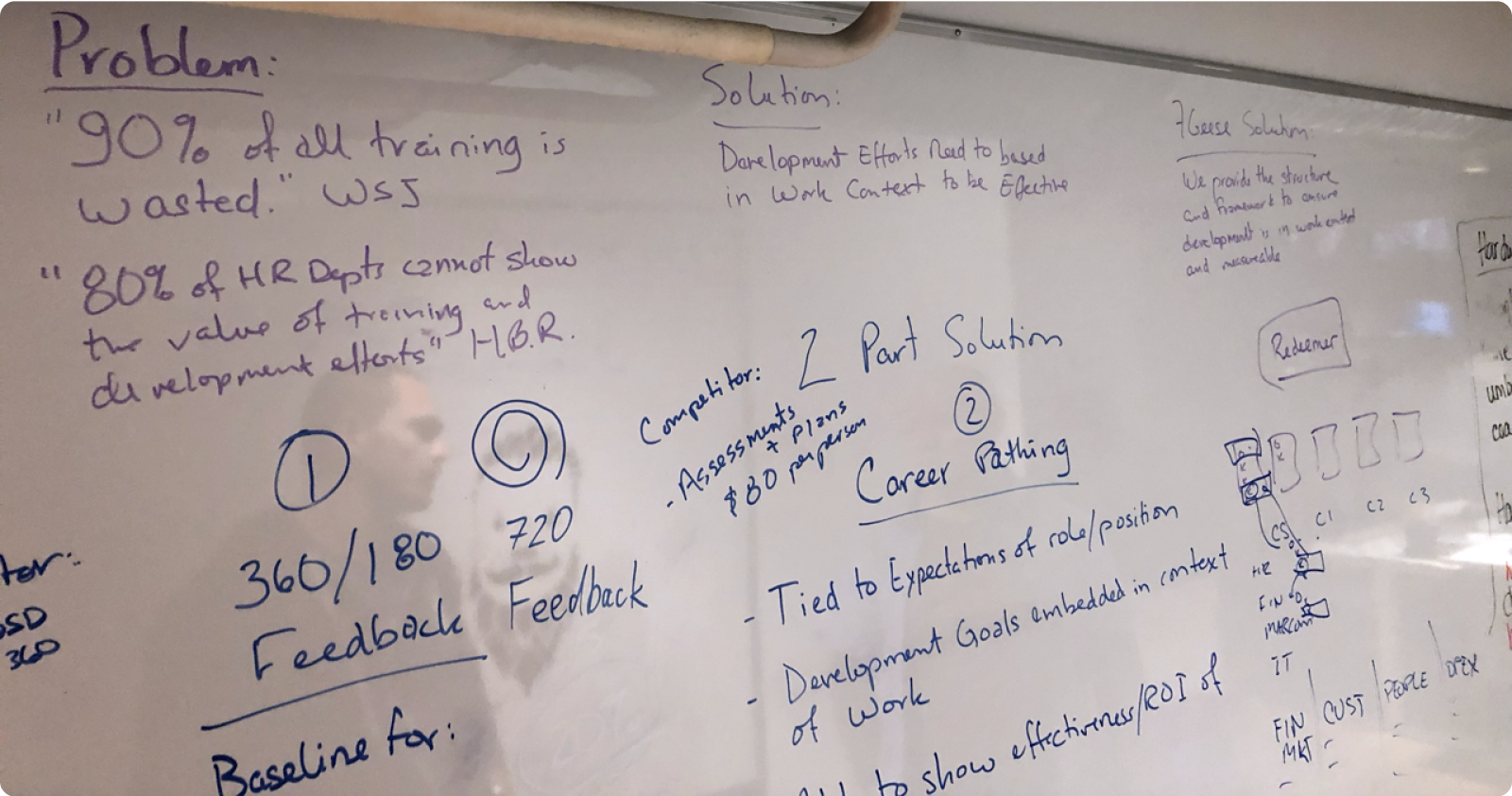
Early insights
During our research, we learned that although the concept of a structured career development product was very compelling to HR leaders, the methods and processes that currently existed varied greatly from company to company.
Despite every company’s career development process being unique, similar patterns began to emerge. For example:
Roles can be defined as...
Responsibilities
A list of duties and accountabilities
Competencies
A list of behaviours and skills
Success can be assessed using...
Basic ratings
Simple 1-3 per job responsibility
Competency levels
A list of duties and accountabilities
Career planning happens...
During performance reviews
Typically annually
Ad-hoc
During onboarding, work anniversaries, etc.
Discovering our guiding principle
The key insight we identified was that HR leaders greatly struggle to connect career development efforts to job performance, which results in less investment in growth and development.
From this insight, we developed our guiding principle:
Reframing the problem
7Geese was a multi-stakeholder product; the buyers were HR leaders and executives, but adoption across the entire company was critical for ROI. With this in mind, it was important that value was clear across a number of user archetypes.
We developed our core principle into three value props:
HR Leaders
A framework to tie career development investments directly to job performance
Managers
Keep your reports focused on development efforts directly related to success in their current and future roles
ICs
Tailor your growth and development efforts directly to career success
Combining our learnings from discovery with our guiding principle, we distilled a series of stories to create an understanding of what our solution would need to address.
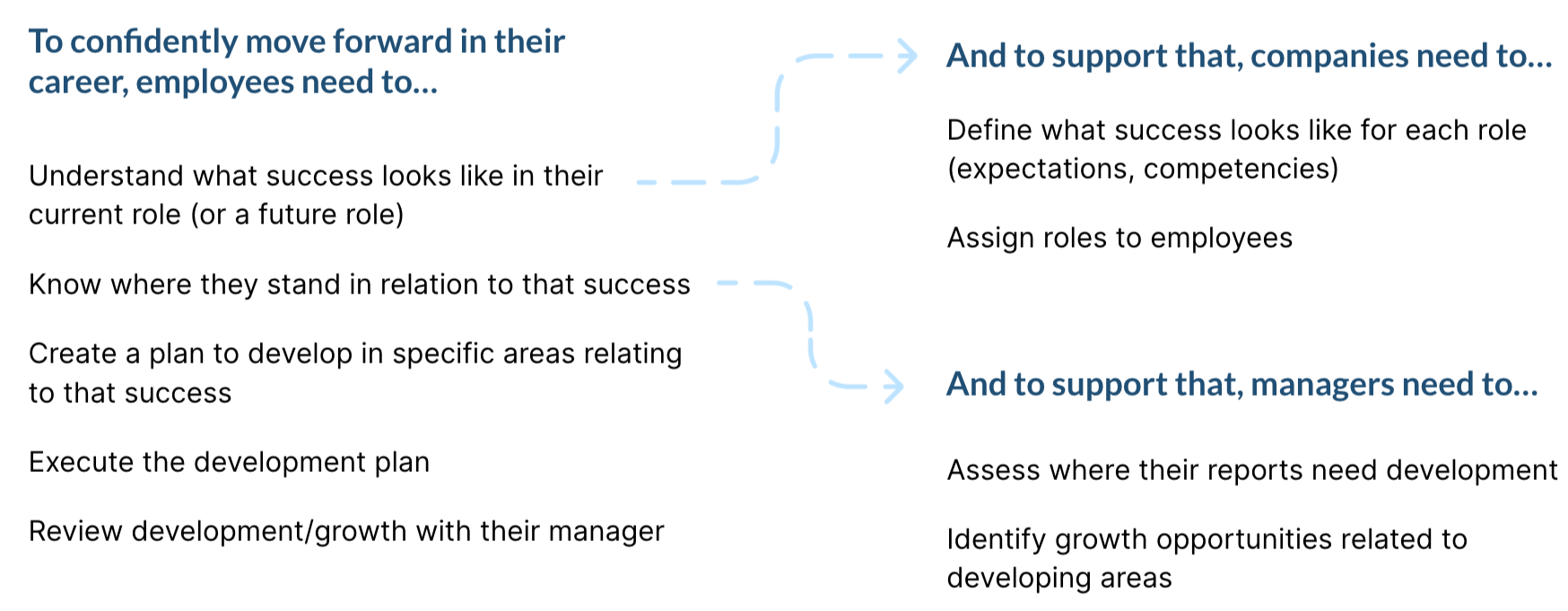
Starting to solve
With our problems now in sharper focus, we began running ideation sessions with the project team and stakeholders to seed some initial ideas and build some momentum as we moved into the ideation phase.
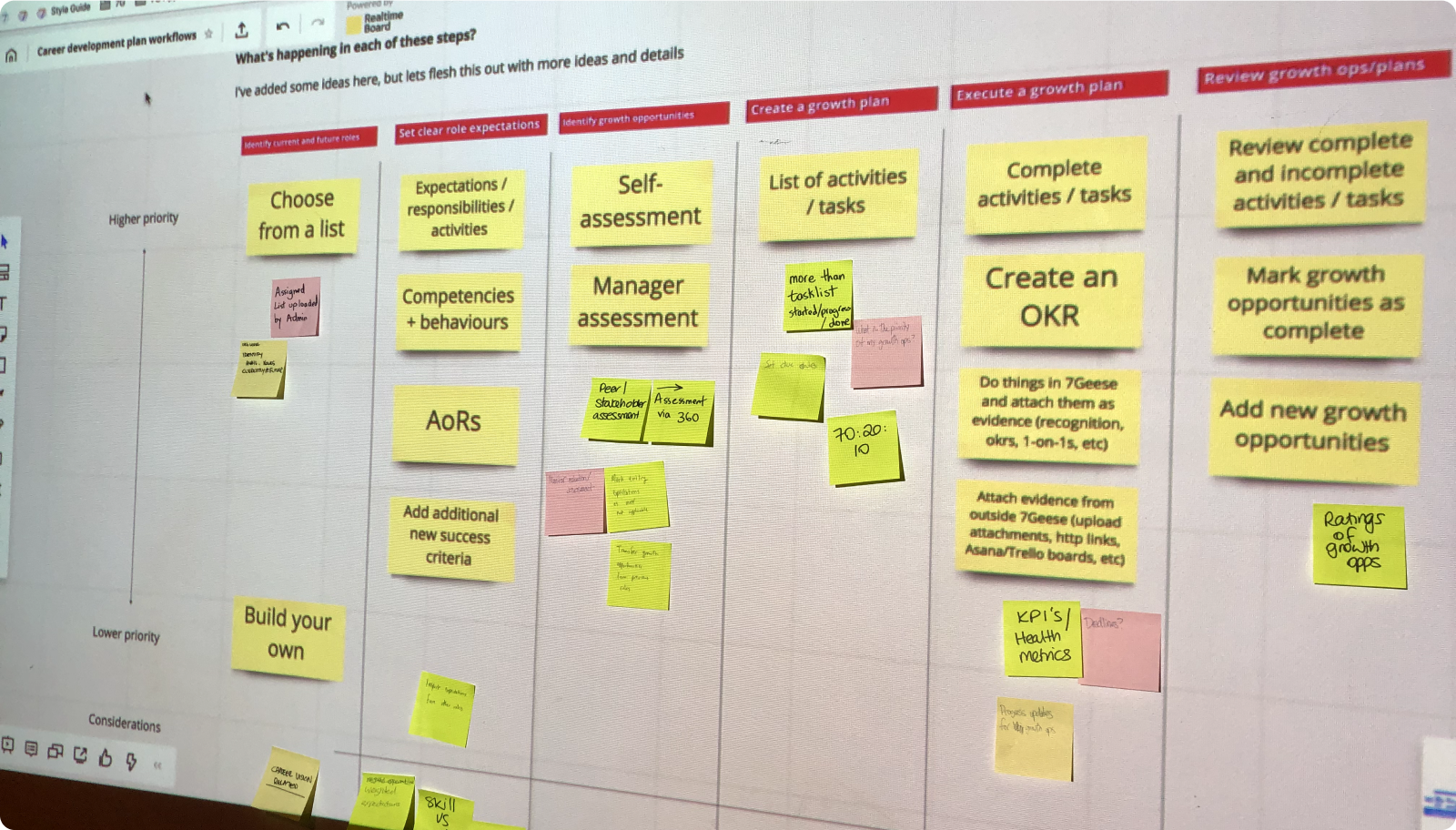
Tying growth and development directly to your role
Using insights from our team brainstorm and learnings from our customer discovery, we created a model to show how we could make a direct connection between growth efforts and career success.

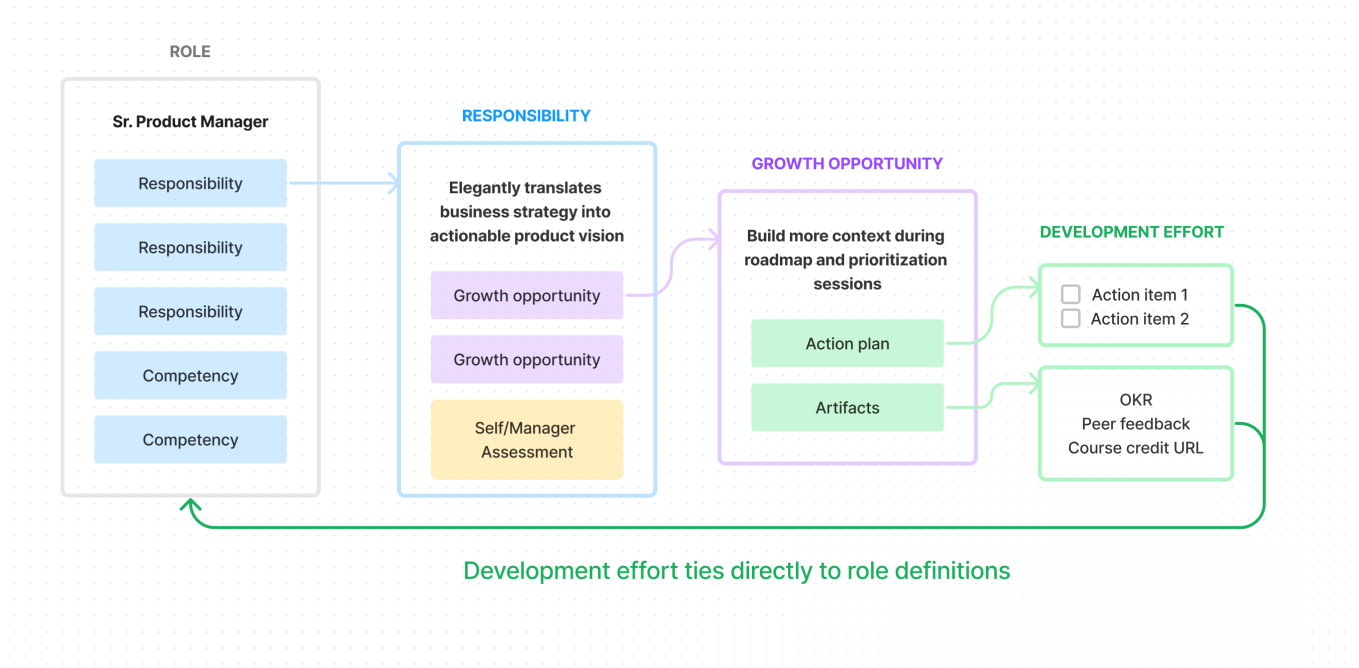
I worked closely with engineering while developing this framework -- this was a new and complex data model that required thorough planning from a development perspective.
From abstract to tangible
After validating with the dev team that the data model was achievable, I began to explore how it could be presented to users in the product.

Journey mapping
Most of the customers we interviewed agreed that Performance Reviews presented the most relevant opportunity build career development plans. It quickly became clear that we had a great opportunity to build Careers directly into our Reviews feature, and benefit from the already-established cycle that teams were running.
This workflow map illustrates how we expected a career profile to develop over the course of a performance review cycle (typically every 6 months, sometimes 3 or 12), and how it would interface with some of the other components of the product, like Reviews and 1-on-1s.

Mapping out this workflow helped us both communicate the concept with prospects and customers, as well as understand where we’d need to involve teams that managed the roadmaps for the Performance Review and 1-on-1 features.
Putting it all together
As we built higher-fidelity mockups and prototypes, we held sessions with customers and stakeholders in our revenue teams so they could provide feedback and start building talk tracks, positioning, support docs, and pricing models.
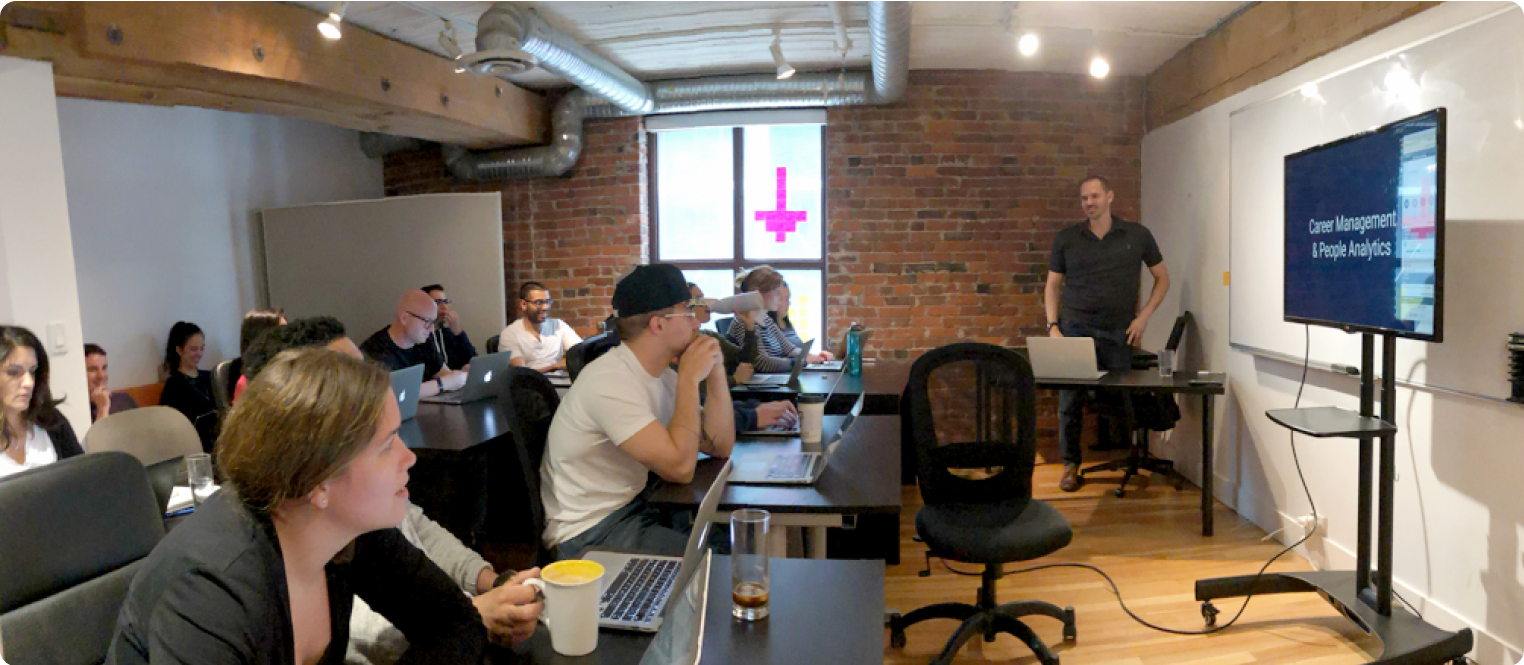

Some of the feedback from user feedback sessions:
- On setting up roles: I want to define a set of core competencies that apply to every role within my org
- On executing a development plan: I need to be able to prioritize my growth opportunities if I have several of them
- On reviewing development progress:I don’t remember who added this growth opportunity or when
- On assessing development progress: I want to use custom rating types (this became the genesis of another entire Ratings project following the release of Careers)
- On data privacy: I’m worried that other employees can see my career development information
Shipping v1
With our v1 launch of 7Geese Careers:
✅ Every employee gets personalized career development plans that meaningfully relate to success in their roles.
✅ Managers can directly support their reports’ career development.
✅ HR leaders have a framework to tie career development investment directly to role definitions.
* In our first release, the HR value prop (prove ROI) was still difficult to prove quantitatively, as reporting functionality was deferred to a post-launch release.

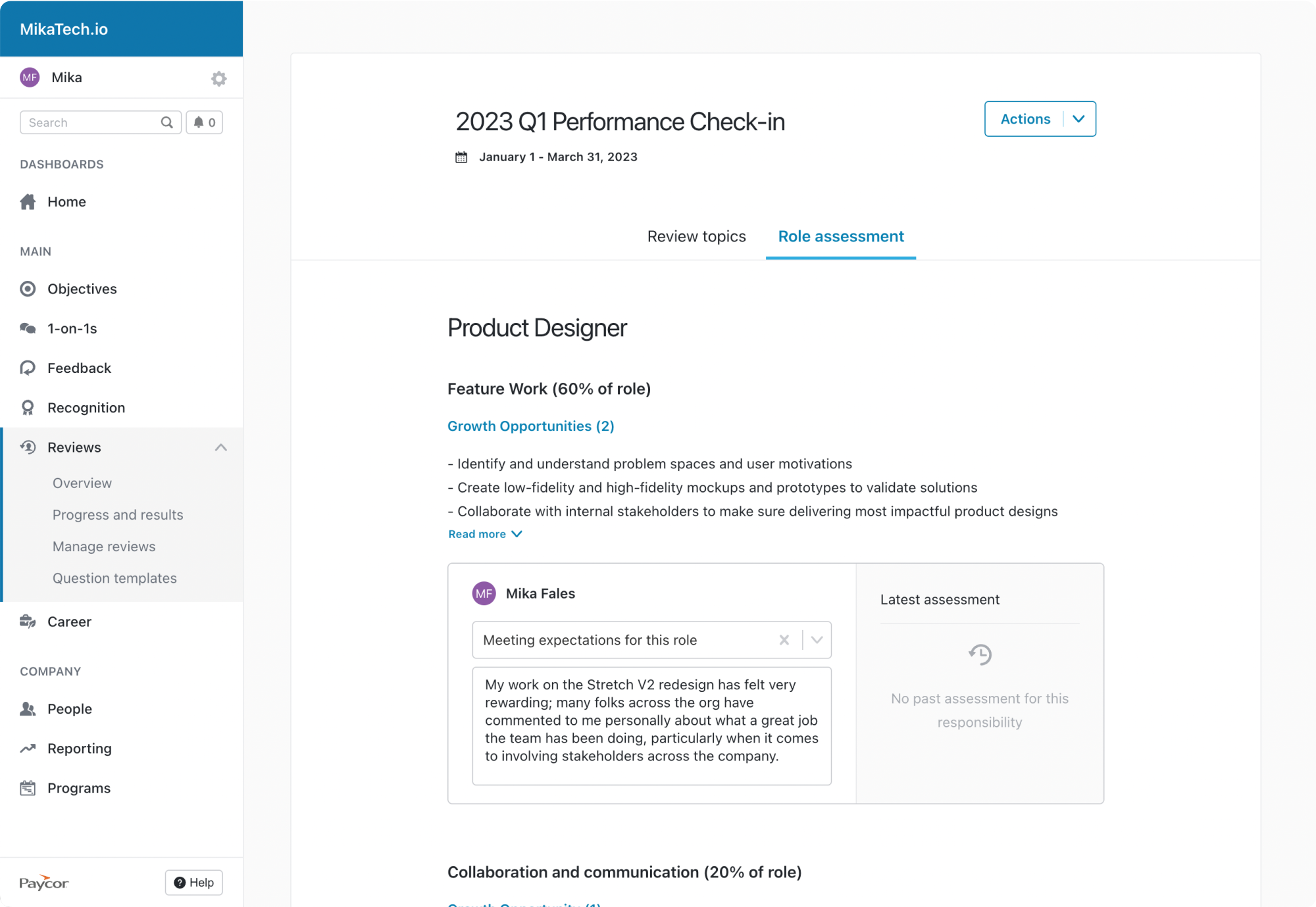
Speed bump: high-effort onboarding
A particularly challenging hurdle during our launch was that Career Profiles relied on HR leaders to have roles defined for every employee. This prevented the launch from gaining rapid adoption, even though customers were actively buying it.
Ultimately, the team found a way to monetize this problem by creating a professional services offering to help companies define and build role definitions within 7Geese, but more time spent on creating some boilerplate job templates could have drastically reduced this initial friction.
Impact
Careers was the largest new feature release in years, and was successful in addressing many of the goals we identified during kickoff!
Customer wins
- HR leaders were empowered with a way to help connect development effort to career growth (our guiding principle)
- Employees had new incentive to adopt the product because it was directly tied to their success
- Performance reviews became much more relevant to each employee, since they included personalized role assessments and reflections
Business wins
- Introduced an innovative differentiator against competitive apps
- Successfully launched a new premium tier and successfully increased ARR through both upsells and net new sales
- Helped the company further its vision of helping companies and employees get the most from one another